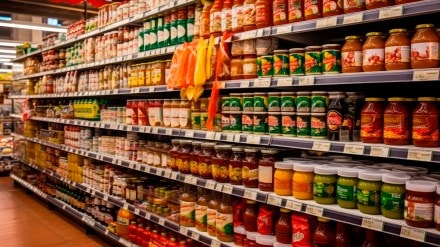A normal monsoon as predicted by Skymet is extremely critical for a higher disposable income, especially in rural India and this will further help drive demand and bring cheer to FMCG companies. The FMCG firms, on account of a better monsoon, are expecting a better 2024-25 (FY25) compared to the previous financial year. The sector is already witnessing an uptick in rural demand, which was impacted for most of the last year due to El Nino conditions.
Earlier this week, Skymet, which had accurately predicted 2023 monsoon rainfall, said the monsoon in 2024 could be normal and quantitatively 102 per cent of the long period average (LPA) of 87 cm, with an error margin of (+/-) 5 per cent.
Krishnarao Buddha, Senior Category Head, Parle Products, said, “Good monsoon is extremely critical for a higher disposable income, particularly in rural India. Good monsoon translates into a good crop, and good crop translates into better money for both rural and urban India and it would relatively also control costs. So once it controls costs, we can expect that we will have better savings and if India is able to generate better savings, we can expect that to be spent in consumer goods. That is expected to propel the demand.” He further stated that the FMCG industry is already seeing some greenshoots particularly in terms of demand. “Beginning December, data has been good. We expect this momentum to continue during the April-June quarter as well and then of course during July-September, we will have a better monsoon; so things will shape up well,” he added.
In April-June quarter, while the overall FMCG is going to clock a growth rate of 7-8 per cent, Parle Products is also expecting to drive this growth by clocking almost upwards of about 12-14 per cent, Krishnarao Buddha said
The monsoon officially begins in June and lasts till September. The LPA for the June to September period is 868.6mm, with rainfall between 96-104 per cent of LPA considered normal.
Analysts also expect FMCG demand to improve, provided there is no disruption in the crucial months of July and August. Rural demand, which has been sluggish in recent quarters, is showing signs of rejuvenation, particularly in the January-March period. This resurgence is bolstered by optimistic forecasts for the rabi crop harvest and expectations of a normal monsoon, instilling confidence in consumers across the board.
Manish Aggarwal, Director, Bikano, Bikanervala Foods Pvt Ltd, said, “Improving macro-indicators and the promising outlook of a bountiful monsoon and rabi crop harvest hold the key to instilling confidence among consumers. As rural perceive greater financial security, their propensity to spend on diverse goods and services increases. In light of these favorable developments, the FMCG sector, which faced subdued growth in the previous quarter amid challenging circumstances, foresees a notable resurgence. As we look ahead, the FMCG industry anticipates mid-to-high-single-digit growth in both value and volume, supported by the expansion of gross margins due to deflation in input costs.”
Ritesh Arora, CEO, India Business & Far East, LT Foods Ltd, meanwhile added, “The improving macro-indicators and a positive monsoon forecast are poised to drive significant consumer demand across rural market, tier-III cities and the rest of the urban market, fostering a thriving environment for FMCG companies. There will be an increase in consumption. As far as LT Foods is concerned, we witnessed 7 per cent growth in volume metric terms and 15 per cent growth in value terms during the last quarter. In the current quarter, we are bullish on further strengthening our distribution network in India.” With the expectation of adjustments in input materials on the back of a favourable monsoon, LT Foods is expected to post 15 per cent growth in India.
Overall, the expectations of the FMCG industry for the next quarter remains optimistic with an expected improvement in consumption trends driven by robust macro-economic indicators.
Manish Aggarwal said, “A good monsoon can significantly boost profits and operating margins for companies, particularly those reliant on agriculture. With ample rainfall, crop yields tend to increase, leading to higher revenues. Moreover, abundant crops can result in lower prices for raw materials, positively impacting operating margins by reducing input costs. Additionally, improved agricultural productivity can stimulate rural purchasing power, further driving demand for products and contributing to revenue growth. In essence, a good monsoon creates favorable conditions for companies to enhance profitability by increasing revenues and reducing input costs.”
Now, will it lead to price corrections by FMCG companies?
While there are no immediate plans by FMCG firms to take price corrections in their product portfolio, Krishnarao Buddha from Parle Products said that the company will closely monitor the prices across its portfolio and will take need based price corrections whenever required. “We might take a price increase in products that use cocoa as one of the ingredients and it will be in the range of 10-15 per cent in certain select products,” he said.
Manish Aggarwal added, “As of now, we are observing the market trends and evaluating various factors that could potentially influence pricing decisions. However, we have not yet reached a decision regarding any changes in the prices of our products. Any adjustments to product prices, if deemed necessary, will be communicated transparently and in accordance with market dynamics.”
